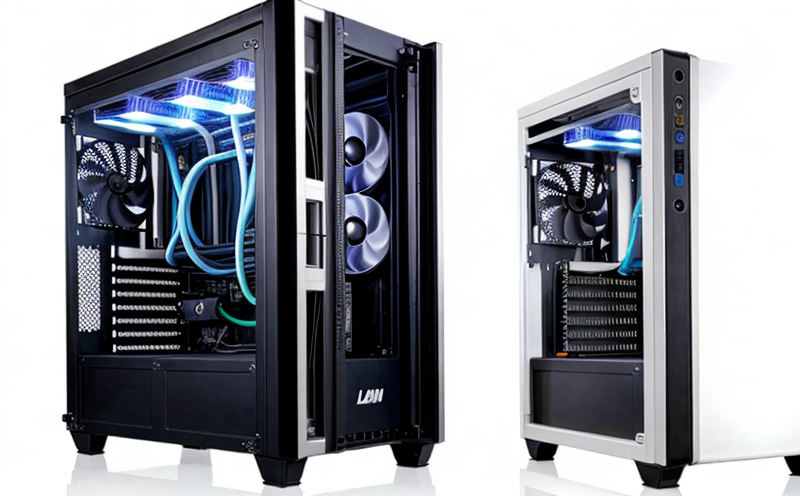ISO 13256 Performance Testing of Water Chillers
The ISO 13256 standard is a critical tool for manufacturers and quality assurance professionals in the HVAC sector. This standard provides guidelines for testing water chillers to ensure they meet performance specifications, especially under various operating conditions. The test procedure outlined in this standard ensures that the chiller's actual performance aligns with its rated capacity.
The test is essential for validating the efficiency and reliability of a water chiller system. It helps manufacturers identify any discrepancies between the theoretical performance parameters and the practical output. This testing process ensures compliance with international standards, which is crucial for global market acceptance and regulatory compliance.
During the ISO 13256 test, several key parameters are evaluated to assess the chiller's efficiency under different conditions. These include the coefficient of performance (COP), energy efficiency ratio (EER), and capacity factor. The COP measures how much refrigeration is produced per unit of electrical input, while EER evaluates cooling capacity compared to electricity consumption.
The testing process involves subjecting the chiller to various load conditions that simulate real-world scenarios. This includes testing at minimum, nominal, and maximum load levels. Each test condition provides insights into how the chiller performs under different operational pressures, ensuring it meets performance expectations across a wide range of applications.
Compliance with ISO 13256 is not just about meeting international standards; it's also about delivering products that meet or exceed customer requirements. By adhering to this standard, manufacturers can ensure their products are reliable and efficient, which translates into reduced operational costs for end-users.
| Standard | Description |
|---|---|
| ISO 13256-1:2017 | Performance testing of water chillers in terms of cooling capacity and energy efficiency. |
| ISO 13256-2:2021 | Measurement of the coefficient of performance (COP) for water chillers. |
The testing process is designed to be comprehensive, covering various aspects that influence a chiller's performance. The test setup typically includes a climate chamber where the chiller operates under controlled conditions. This ensures consistent and repeatable results, which are essential for accurate evaluation.
Before conducting the tests, it’s crucial to prepare the specimen according to ISO 13256 guidelines. This involves ensuring that the chiller is in a stable state, free from any external influences that could affect its performance during testing. The specimen preparation also includes verifying all sensors and instruments used for data collection are functioning correctly.
Once the specimen is prepared, the test begins by subjecting the chiller to different load conditions. The primary parameters measured include cooling capacity, energy consumption, and COP under each condition. These measurements provide a detailed picture of how efficiently the chiller operates under various scenarios.
Applied Standards
| Standard | Description |
|---|---|
| ISO 13256-1:2017 | This part of the standard specifies the procedure for measuring cooling capacity and energy efficiency in water chillers. |
| ISO 13256-2:2021 | This part focuses on determining the coefficient of performance (COP) of water chillers. |
The standard ensures that all tests are conducted under controlled and repeatable conditions, providing accurate and reliable data. Compliance with these standards is essential for manufacturers to ensure their products meet international quality benchmarks.
Scope and Methodology
| Aspect | Description |
|---|---|
| Cooling Capacity | The maximum cooling capacity of the chiller under specified conditions. |
| Energy Efficiency Ratio (EER) | The ratio of cooling output to input power, measured at various load levels. |
| Coefficient of Performance (COP) | A measure of the efficiency of a heat pump or chiller, indicating how much useful energy is produced per unit of electrical energy consumed. |
The testing methodology involves subjecting the water chiller to different operating conditions. The test setup includes a climate chamber that simulates real-world environmental factors such as temperature and humidity. This ensures that the chiller's performance is evaluated under realistic conditions, enhancing the relevance of the test results.
During the test, various parameters are continuously monitored using high-precision instruments. These include temperature sensors, flow meters, and power meters. Data collected during the test is thoroughly analyzed to determine compliance with ISO 13256 standards. This analysis helps identify any discrepancies between the chiller's actual performance and its rated capacity.
The results of these tests are used by manufacturers and quality assurance teams to make informed decisions about product improvements. By adhering to ISO 13256, companies can ensure their products meet or exceed international standards, thereby enhancing market competitiveness and customer satisfaction.
Why Choose This Test
- Ensures compliance with ISO 13256 standards for water chillers.
- Evaluates the performance and capacity of water chillers under various conditions.
- Provides accurate and reliable data to support product development and quality assurance.
- Enhances market competitiveness by ensuring products meet or exceed international standards.
- Saves time and resources by identifying any discrepancies early in the production process.
- Aids in regulatory compliance, reducing the risk of non-conformance penalties.
The ISO 13256 performance test is an essential tool for manufacturers aiming to produce reliable and efficient water chillers. By choosing this test, companies can ensure their products meet global quality benchmarks, enhancing market acceptance and customer trust.





